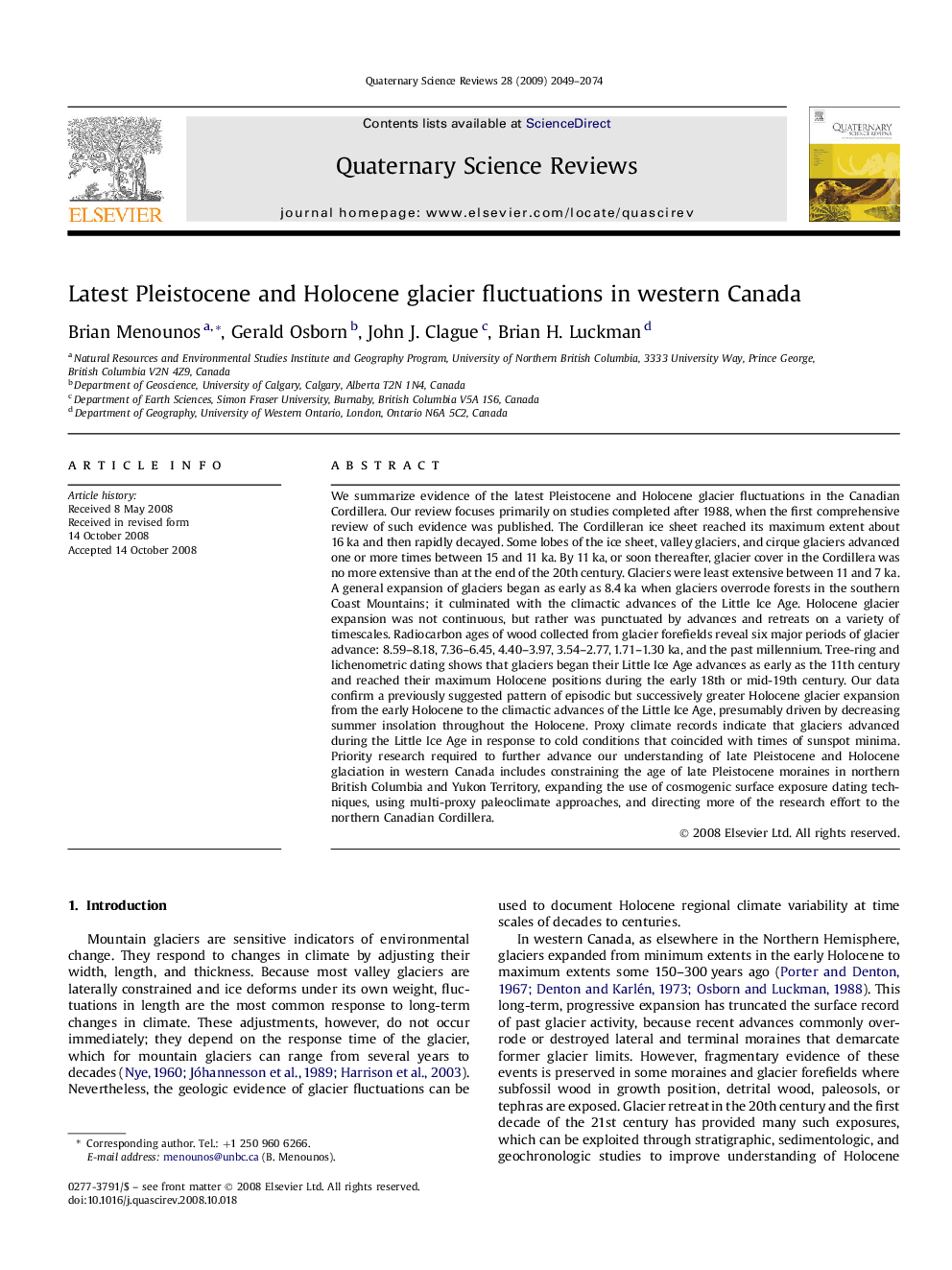| کد مقاله | کد نشریه | سال انتشار | مقاله انگلیسی | نسخه تمام متن |
|---|---|---|---|---|
| 4737946 | 1640935 | 2009 | 26 صفحه PDF | دانلود رایگان |

We summarize evidence of the latest Pleistocene and Holocene glacier fluctuations in the Canadian Cordillera. Our review focuses primarily on studies completed after 1988, when the first comprehensive review of such evidence was published. The Cordilleran ice sheet reached its maximum extent about 16 ka and then rapidly decayed. Some lobes of the ice sheet, valley glaciers, and cirque glaciers advanced one or more times between 15 and 11 ka. By 11 ka, or soon thereafter, glacier cover in the Cordillera was no more extensive than at the end of the 20th century. Glaciers were least extensive between 11 and 7 ka. A general expansion of glaciers began as early as 8.4 ka when glaciers overrode forests in the southern Coast Mountains; it culminated with the climactic advances of the Little Ice Age. Holocene glacier expansion was not continuous, but rather was punctuated by advances and retreats on a variety of timescales. Radiocarbon ages of wood collected from glacier forefields reveal six major periods of glacier advance: 8.59–8.18, 7.36–6.45, 4.40–3.97, 3.54–2.77, 1.71–1.30 ka, and the past millennium. Tree-ring and lichenometric dating shows that glaciers began their Little Ice Age advances as early as the 11th century and reached their maximum Holocene positions during the early 18th or mid-19th century. Our data confirm a previously suggested pattern of episodic but successively greater Holocene glacier expansion from the early Holocene to the climactic advances of the Little Ice Age, presumably driven by decreasing summer insolation throughout the Holocene. Proxy climate records indicate that glaciers advanced during the Little Ice Age in response to cold conditions that coincided with times of sunspot minima. Priority research required to further advance our understanding of late Pleistocene and Holocene glaciation in western Canada includes constraining the age of late Pleistocene moraines in northern British Columbia and Yukon Territory, expanding the use of cosmogenic surface exposure dating techniques, using multi-proxy paleoclimate approaches, and directing more of the research effort to the northern Canadian Cordillera.
Journal: Quaternary Science Reviews - Volume 28, Issues 21–22, October 2009, Pages 2049–2074